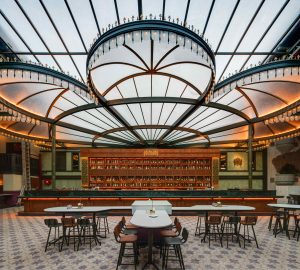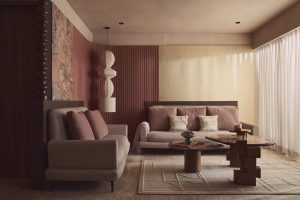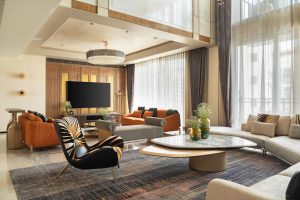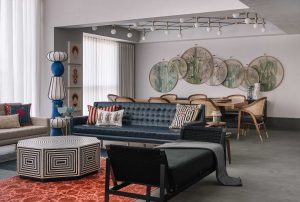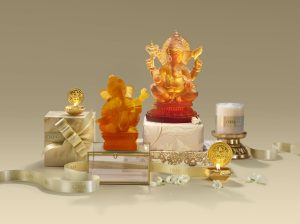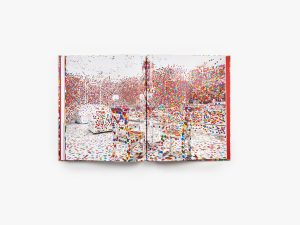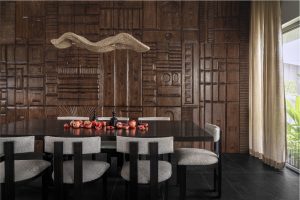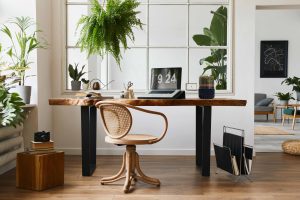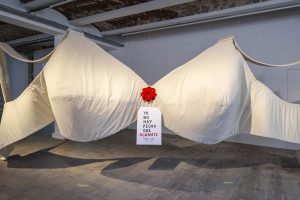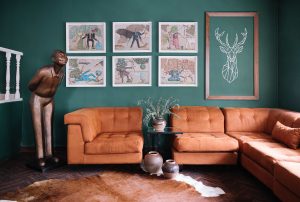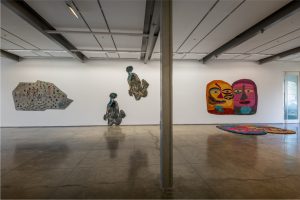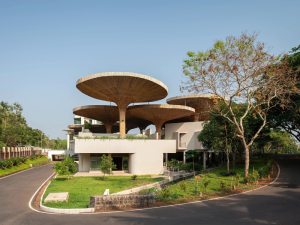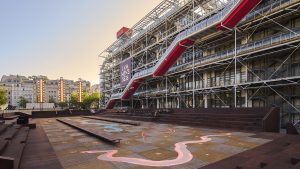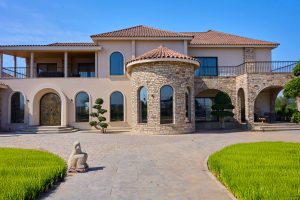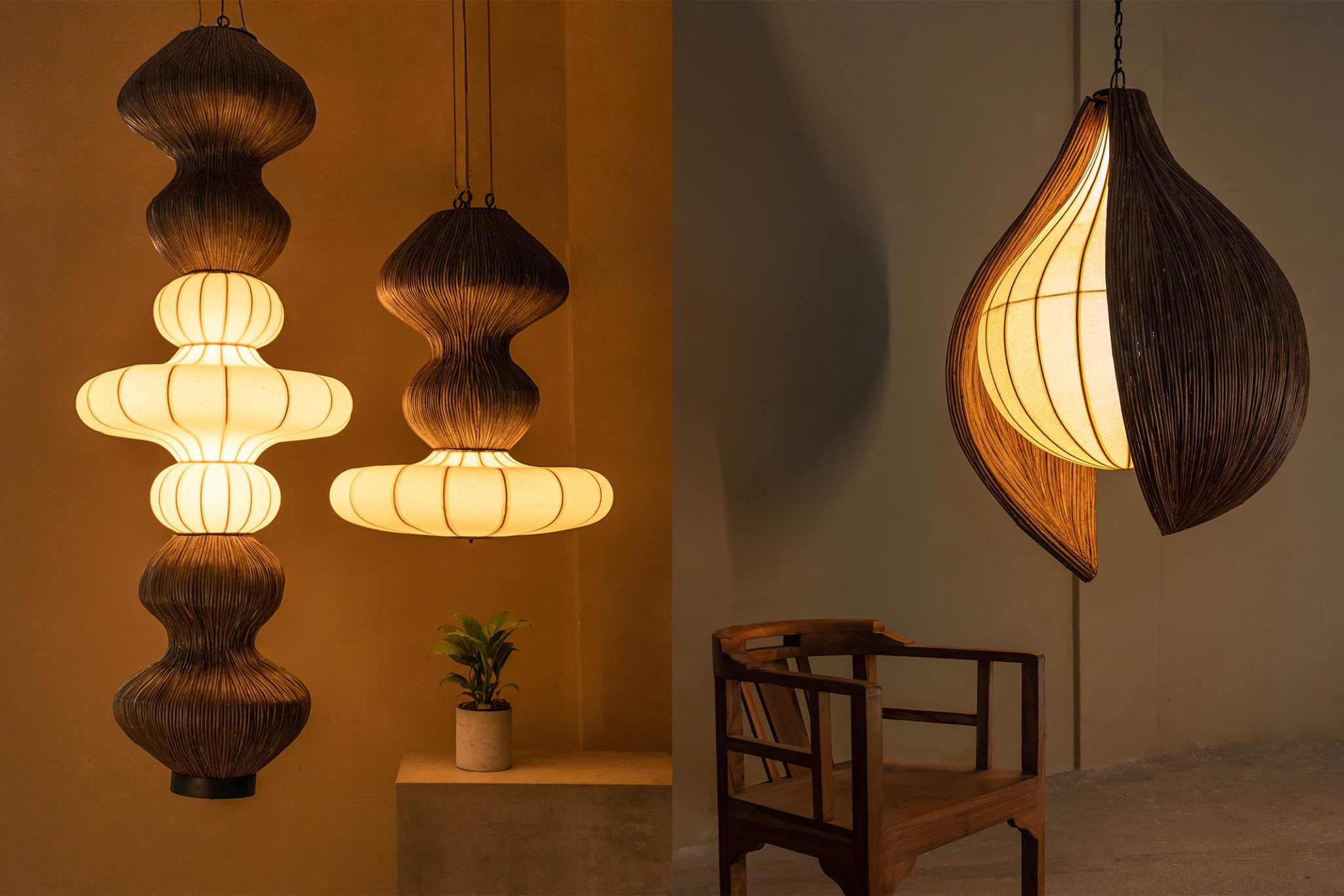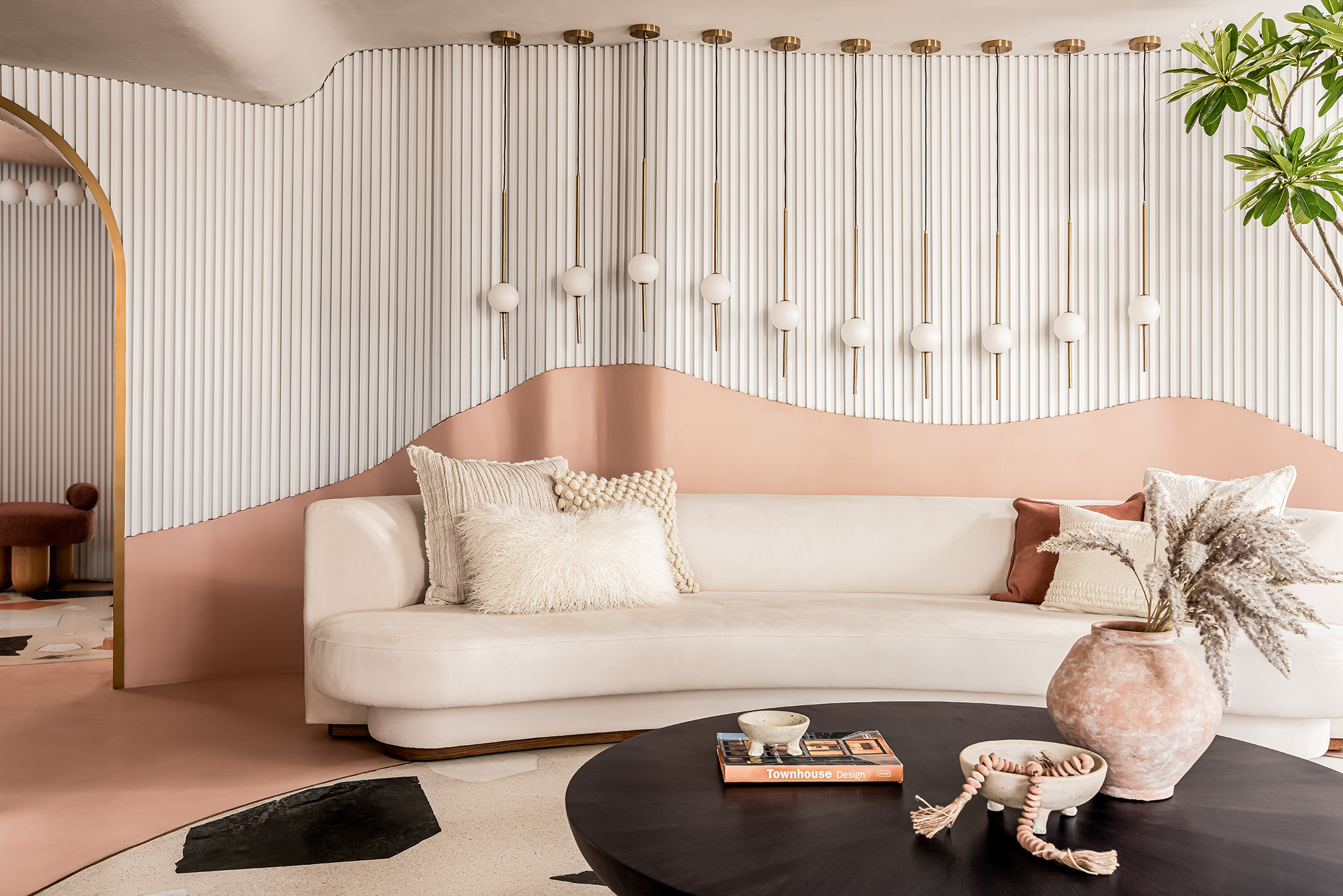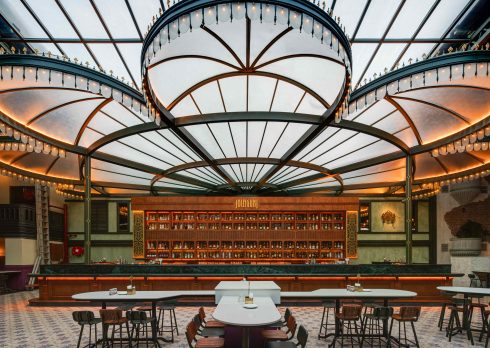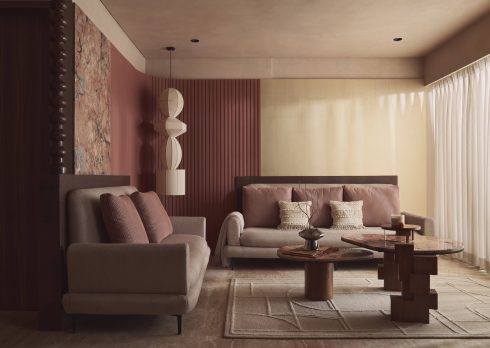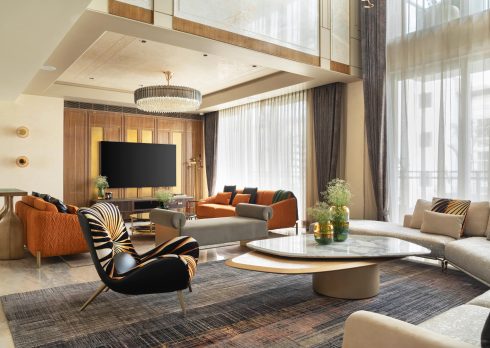DP Trends: The Science And Style Of Curved Interiors
Introducing curved elements can effortlessly soften the geometry within spaces. Here is DP’s guidebook on bending the rules to soften sharp edges that make a space flow with nature.
- 16 Jul '25
- 1:28 pm by Simran Almeida
Fluid, extemporaneous, and harmonious curves have eternally been nature’s sinuous harbingers to signal spontaneity. From the arc of a seashell to the voluptuous path of a river, curves have a case for wilderness and freedom. A quiet defiance against the crisp lines and rigid minimalism, these swoops hint at softness, rhythm, and continuity. Now, as homes evolve post-pandemic into personal sanctuaries for self-expression, there is a craving for warmth and wellness, and curves emerge as emotional balm for the mind. From sweeping archways to plush, rounded armchairs, designers are increasingly embracing soft, organic forms that guide the eye and circulation while imbuing spaces with a sense of snugness and comfort.
Curves have long etched their mark across design history, from the decadent scallops of Art Deco, the sensuous lines of Art Nouveau, to the voluptuous charm of mid-century modernism. Even the freeform lounges of the 1970s embraced curves as symbols of ease and rebellion. In contemporary times, designers draw on this rich lineage where curves maintain a balance between form and function, emotion and functionality. DP’s latest trend report explores the influence of curves, uncovering how these fluid forms soften spatial edges, evoke emotional resonance, and the science behind them.
Why Curves Are Better Than Lines
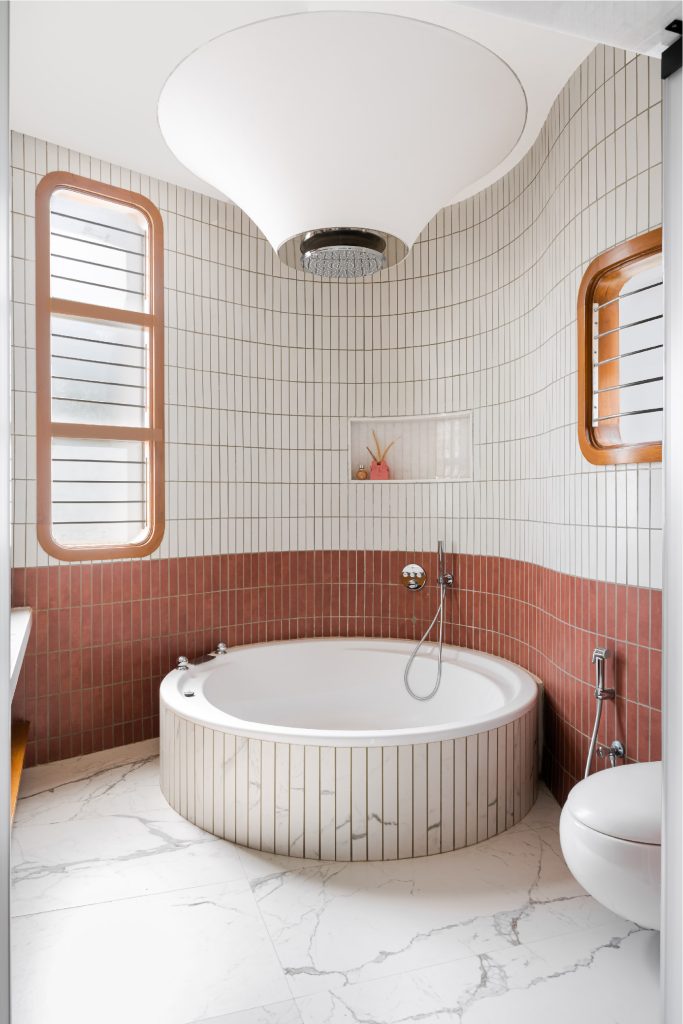
In the language of interiors, curves often choreograph a flow, while gently defining the room’s function, softening spatial transitions, and imbuing rooms with a sense of calm. Curves mirror the natural world, where organic forms such as ripples, dunes, canopies, and rivers rarely follow a linear path. In a 2007 study, Israeli neuroscientist Moshe Bar and Maital Neta revealed that objects with sharp, angular contours tend to elicit heightened threat detection compared to those with curved lines. This subtle neurological preference for curves translates into the way we experience space, whether sweeping or subtle, it breaks the grid. For instance, in bathrooms, a gently curved wall paired with an oval freestanding tub subtly imbues the space with a serenity that mirrors a spa-like sanctuary. While rounded openings, voluptuous shower heads, and recessed niches following the wall’s shape further reinforce this sense of immersive calm, making everyday rituals feel indulgent.
Also Read: DP Trends: The Bold Revival Of Stripes
Think plush, rotund couches cradling the living area in softness, while playful arc-shaped illustrations in the bedroom imbue a sense of comfort. In an open-plan layout, these sinuous forms—be it an oversized circular rug anchoring a reading nook or a crescent-shaped partition subtly outlining a lounge—gracefully delineate spatial boundaries without disrupting flow.
The Architectural Anatomy Of Curves
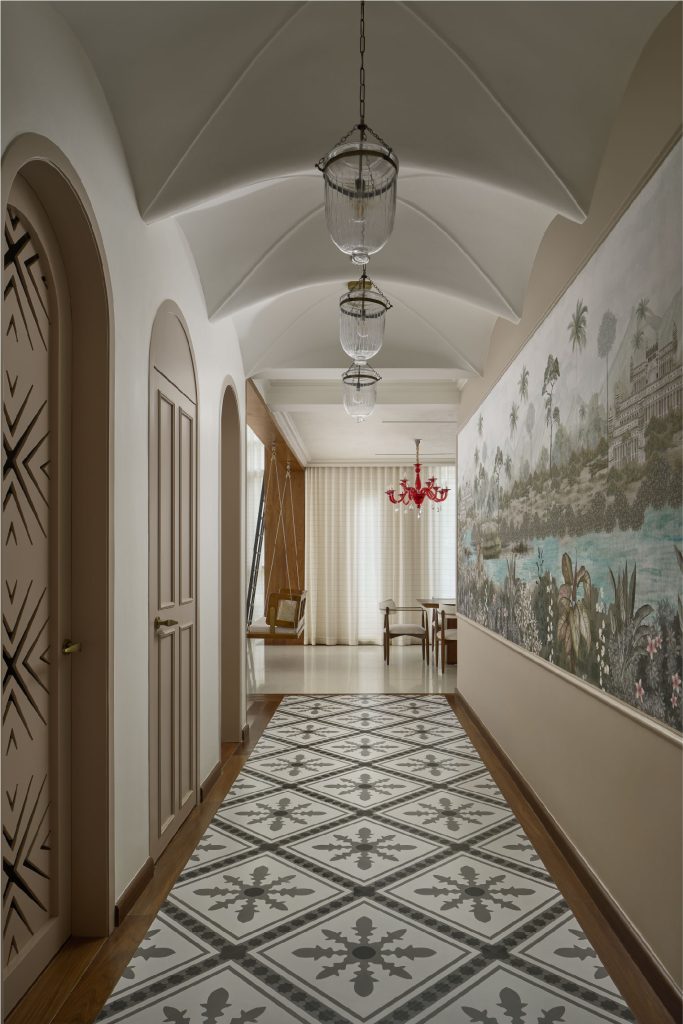
From the soaring vaults of Roman aqueducts to the botanical flourishes of Art Nouveau, curves rose as solutions to colossal structural demands. In contrast to the stark rigidity of linear layouts that confine boundaries of spaces, organic architecture dissolves boundaries to compose a more fluid, interconnected space. Imagine vaulted ceilings in a foyer guiding movement with effortless grace, while lifting the eye upward and expanding the sense of vertical space, while a series of arched doorways orchestrate moments of pause. Today, these organic elements are emerging across interiors not as decorative excess but to introduce rhythm and softness, drawing references from nature’s language to create spaces.
While the sweep of a staircase unfurls like a nautilus shell, it guides the eye upward in a crescendo, serving as a moment of pause suspended mid-air. In spaces like these, architecture orchestrates an emotional ascent, modulating the perception of scale and movement, turning transitional elements into an invitation to linger a little longer.
The Elements Of Ease
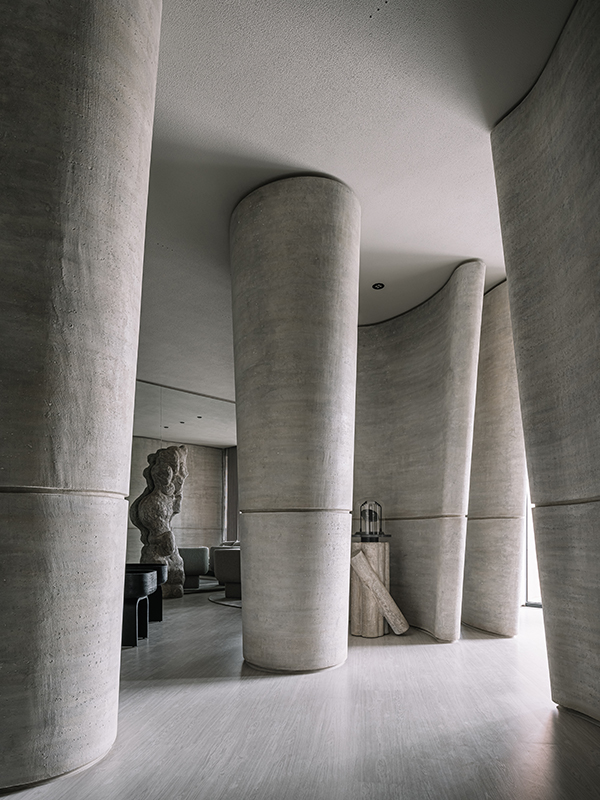
Organic elements are having a renaissance, occurring throughout the interiors in the form of arched doorways, scalloped cabinetry, and fluted columns. These sinuous elements cut out the austerity of linear layouts, imbuing interiors with a sense of timeless grandeur and fluidity. Picture a crew of curved concrete columns in a store that breaks away from rigid verticality. For those attuned to biophilia, these curved columns in raw concrete—reminiscent of tree trunks—evoke the illusion of being gently cradled within a forest grove.
Also Read: DP Trends: Everything You Need To Know About Ware Minimalism
Imagine rounded islands, curved breakfast counters, and bullnose cabinetry lending an unexpected gentleness to utilitarian zones, softening the gridlocked geometry of the kitchen. These subtle curves reduce visual aggression and create a more relaxed environment, especially in high-use areas where the brain is processing multiple stimuli. While in the bathrooms, curves sheath the senses: arched shower enclosures, circular vanities, and pill-shaped mirrors add a sense of warmth. When placed meticulously, these soft forms transform functional spaces into emotionally supportive environments, making daily rituals more restorative.
The Subtle Power Of Accessorising
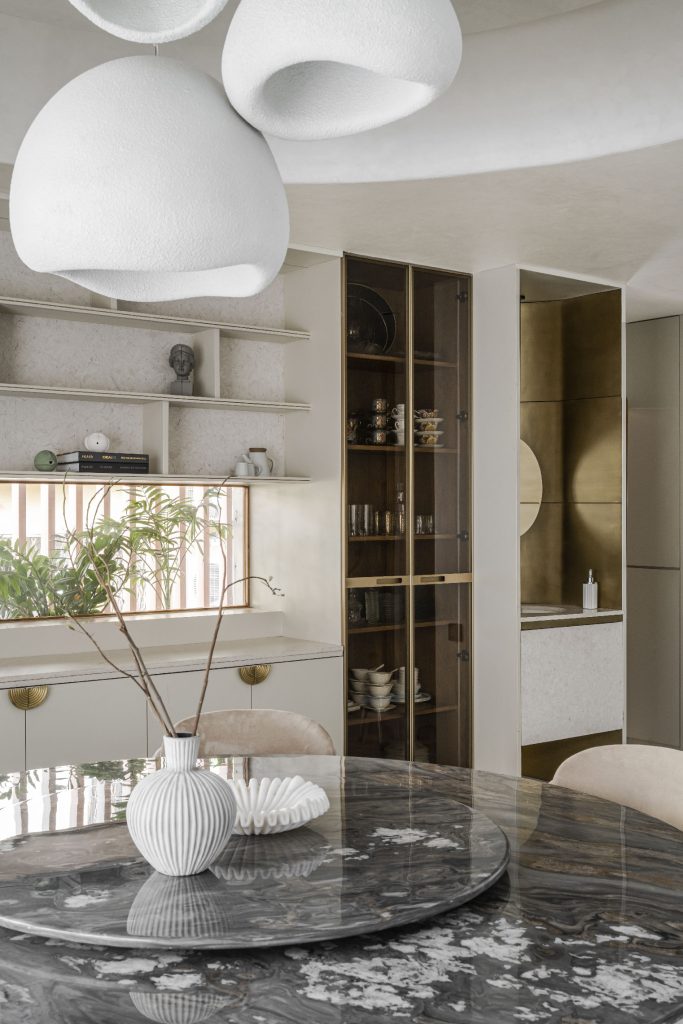
Curves need not always proclaim grandeur; even the tiniest accents possess the power to orchestrate a transformation in a room’s ambience. These curves manifest into sinuous pendant lighting above the dining table, its curved forms casting a soft, embracing glow that sculpts the atmosphere while breaking the rigidity of linear lines. These undulating accents break visual monotony, encouraging a sense of calm and spatial cohesion.
Also Read: DP Trends: Unexpected Neutrals
For the discerning aesthete wary of structural alteration, plush pouffes with elaborate contours, sculpted lamp bases, or mushroom-inspired side tables transform into portals to the realm of serenity. These undulating forms in candlesticks, orbiform vases, scalloped trays, and circular wall sculptures punctuated within a space hint towards softness and fluidity. Picture a children’s sanctuary with imaginative alcoves, serpentine shelving and wavy desks infusing a whimsical joie de vivre and distinctive charm.
Curves Are Here to Stay
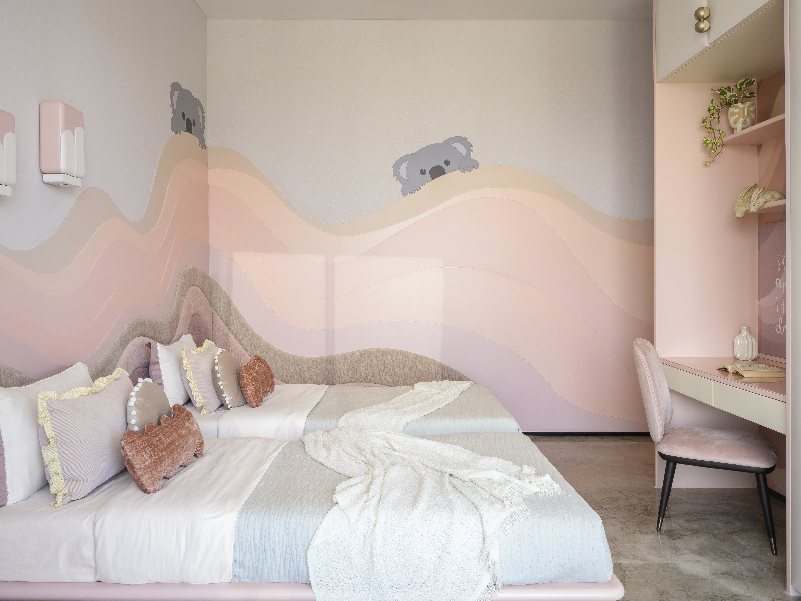
In a world that increasingly feels angular and sharp, curves offer a reprieve that is an invitation to revel in warmth. As Sahiba Madan of Insitu Design Studio explains about incorporating curves, “The vaulted arches elevate the spatial experience, offering a feeling of vastness and grandeur while incorporating ornate glass pendant lights.” As we move further into an era shaped by neuroaesthetics and holistic well-being, curves pose as nostalgic callbacks reimagined as essential design tools. These gentle arcs slow the eye, soften transitions, and introduce rhythm into rigid layouts. Be it a scalloped headboard, spiral staircase, or voluptuous walls, these curved forms foster intimacy and flow, mirroring nature’s contours, creating spaces that feel innately warm and comfortable. As designers place wellness and emotion at the heart of spatial narratives, curves reclaim their place as enduring forms that transform homes into sanctuaries.

